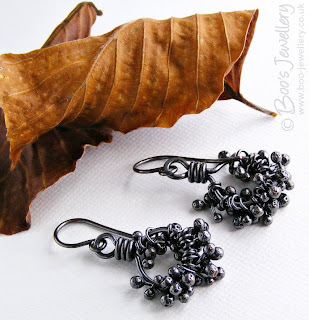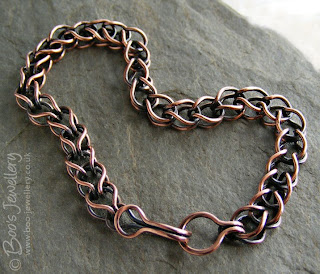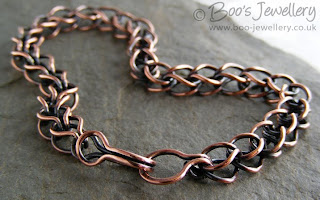If you're a craftsperson like me (I use that term loosely to mean you make things) you're surely familiar with the dilemma we continually face around Christmas and birthday times when it comes to gift giving. Do you give your nearest and dearest yet something else you've made, or head to the shops?
 Please click on the photos to see a larger view.
Please click on the photos to see a larger view.
They look rather dark and woolly here on the page.The way I see it, if I'm going to spend a given amount of cash on someone, if I spend that on raw materials and increase its value by adding a chunk of my time too - they ultimately get that much more of a gift, value-wise, than if you'd spend the same cash on something priced at retail. This is especially worthy of consideration when times are hard and you simply don't have enough dosh to buy something you feel would be suitably worthy. Not to mention that most people value a little extra care and thought than just popping into a department store and grabbing the nearest shiny. For me, personal time given is 'value added' in every sense of the word. I'd much rather have an hour of someones time than know they just flashed the plastic.
But do others appreciate that thinking? Do they get sick to death of some piece of hand made goodness, no matter how carefully crafted or how many hours invested? Do they just think you're a cheapskate? I do have one particular relative who always calls my creations 'home made' deliberately to demean them. But thankfully she's the exception.

It's a perpetual dilemma to which there is no easy answer. I hope those that I invest the most time on will take it in the spirit in which it's intended - an effort to make my hard earned cash go that bit further, as well as giving them something that is perhaps even more precious than a few quid - some of my time and a resulting piece that I often aim to remain unique for them and something I've given particular thought and care to. I actually really enjoy sourcing materials, sketching designs and ideas in order to create that particular piece I hope they'll treasure.
Which is what took me to a reel of copper wire this week, to test out a Christmas gift idea I had, before committing myself to some Sterling silver. I wanted to try a chain maille technique I'd done before with rubber 'O' rings - a chain making technique which uses closed and usually fairly thin rings - where most maille techniques use open jump rings - at least initially to create the weave. This weave starts with closed rings that you shape and link together.

I know this as a
loop-in-loop weave, but it may well have other names. It is reputed to be one of the oldest chain patterns found in antiquities, examples have been found up to 3000 years old. The design often features in Roman jewellery and as they knew a thing or two about personal adornment those Romans, that's good enough for me.
I soldered together a handful of rings of a guessed size and made a section of chain. The first attempt looked very nice, but there wasn't enough space for it to move and the chain was too rigid, so I made some sightly larger rings. Only a couple of millimetres larger in diameter (but over 6mm more wire in each loop), but it made quite a difference to the weave. They were now a little too loose and open.

But I made a few more to see how it flowed in a decent length and decided that I liked the loopy open look of it, so stuck with the size. It was intended to be a snagging and measuring exercise before I made a reach for the silver (I think of them as prototypes - I learn by trying), but I actually really liked the result in copper, so made a pile more rings and made me a bracelet.
It took me a while to work out a clasp design and methodology that worked with the shapes of the chain links, but I'm pretty happy with how it worked out - after a bit of trial and error and some that weren't quite right. I often see beautiful chain maille pieces, with poorly executed clasps or commercially made ones just plonked on. To me, the clasp is an incredibly important part of a design. It has to work efficiently, so be well engineered, but also sit comfortably aesthetically alongside the rest of the piece - to look like an intentional part of the design, not an afterthought.
So this one needed a little extra thought (I left it overnight for my brain to work on) as the links are directional, so one end of the chain is a different shape from the other, so making the clasp flow nicely, but with connections 90 degrees from each other and to reflect the shapes of the main links, took some working on. I also have bruised fingers for my trouble too. It's hazardous stuff this jewellery making.

I took some photos of it in its raw copper post-polishing state while I decide what final finish to give it. I'm erring towards antiqued - as I just like that colour best - but it depends on how the silver soldering will look once oxidised.
What do you think?
 The 'decoration' of the pin was provided by 3 strands
The 'decoration' of the pin was provided by 3 strands














